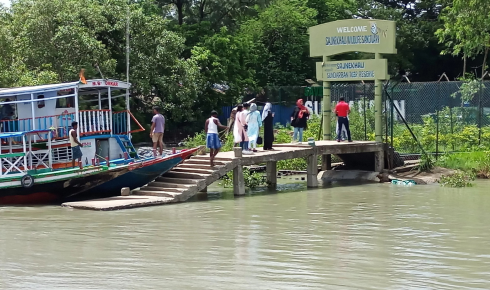Planning a Sundarban trip offers a unique chance to experience the enchanting beauty of the world’s largest mangrove forest, located at the confluence of the Ganges, Brahmaputra, and Meghna rivers in India and Bangladesh. This vast, mysterious delta region is a UNESCO World Heritage Site and home to an extraordinary variety of wildlife, including the iconic Royal Bengal Tiger. A trip to the Sundarbans is more than just a vacation—it’s an immersive journey into a fragile ecosystem rich in biodiversity and cultural heritage.
Why Choose a Sundarban Trip?
The Sundarbans is a sprawling network of tidal waterways, mudflats, and small islands covered by dense mangrove forests. It is a sanctuary for wildlife lovers and nature enthusiasts seeking to connect with nature away from the hustle and bustle of city life. A sundarban trip offers an authentic adventure, combining thrilling wildlife safaris, serene boat rides, and opportunities to engage with the local culture.
A guided trip ensures that you explore this complex environment safely and responsibly, maximizing wildlife sightings and allowing you to learn about the delicate balance that sustains this unique habitat.
Best Time for a Sundarban Trip
The ideal time to plan your Sundarban trip is between October and March. During these months, the weather is cooler and drier, making boat safaris more comfortable and increasing the chances of spotting wildlife. The monsoon season, from June to September, is usually avoided due to heavy rainfall, which causes rough river conditions and limited visibility.
Highlights of a Sundarban Trip
1. Boat Safari Through Mangrove Creeks
A Sundarban trip is incomplete without a boat safari. Navigating through the labyrinth of tidal rivers and creeks, you will witness the lush mangrove forests that provide shelter to diverse species. These calm boat rides allow for close encounters with wildlife such as crocodiles sunbathing on riverbanks, spotted deer grazing near the water, and a variety of birds in vibrant colors.
2. Wildlife Spotting
The Sundarbans are renowned for the elusive Royal Bengal Tiger, the apex predator of this mangrove jungle. While tiger sightings require patience and a bit of luck, the forest is teeming with other fascinating creatures like fishing cats, saltwater crocodiles, monitor lizards, and an array of bird species including kingfishers, herons, and eagles.
3. Visit Watchtowers and Forest Stations
Your trip may include stops at watchtowers that offer panoramic views of the dense forest canopy and river channels. These elevated platforms improve your chances of spotting wildlife in their natural habitat from a safe distance. Visiting forest stations also provides insights into conservation efforts and the lives of forest rangers protecting this fragile ecosystem.
4. Cultural Experiences
Many Sundarban trips include visits to nearby villages where you can interact with local communities. These cultural encounters highlight traditional livelihoods like fishing, honey collection, and crab farming, which coexist sustainably with the forest environment.
Planning Your Sundarban Trip: What to Expect
Most Sundarban trips are organized from nearby cities such as Kolkata (India) or Khulna (Bangladesh). Typical itineraries include transportation by road to the forest entry points, boat rides through the mangroves, overnight stays in eco-lodges or houseboats, and guided tours led by experienced naturalists.
Meals often feature delicious local Bengali cuisine, giving you a taste of regional flavors. It’s advisable to pack lightweight, breathable clothing, insect repellent, a good camera with a zoom lens, and binoculars for bird watching.
Why a Sundarban Trip Should Be on Your Bucket List
A Sundarban trip offers more than just wildlife and nature—it’s an opportunity to disconnect from modern life and immerse yourself in a timeless landscape where nature reigns supreme. The tranquility of the waterways, the thrill of spotting rare animals, and the warmth of local hospitality combine to create an enriching travel experience.
The Sundarbans also hold great ecological importance as a natural barrier protecting inland areas from cyclones and floods. Visiting this region raises awareness about the need to conserve such vital habitats amid global environmental challenges.
Tips for a Successful Sundarban Trip
- Book your trip with reputable tour operators who emphasize responsible tourism.
- Follow all safety guidelines provided by your guides, especially during boat safaris.
- Respect local customs and wildlife habitats.
- Carry essential gear like hats, sunscreen, and water bottles.
- Be patient and maintain silence to increase chances of spotting wildlife.
Conclusion
A Sundarban trip is an unforgettable adventure that offers a rare glimpse into one of the planet’s most extraordinary ecosystems. With its stunning mangroves, diverse wildlife, and rich cultural tapestry, the Sundarbans provide an experience that stays with you long after you leave. Whether you are an avid wildlife enthusiast or a traveler seeking peace and natural beauty, the Sundarbans welcome you to explore their wonders. Plan your trip today and embark on a journey into the heart of nature’s marvel.

